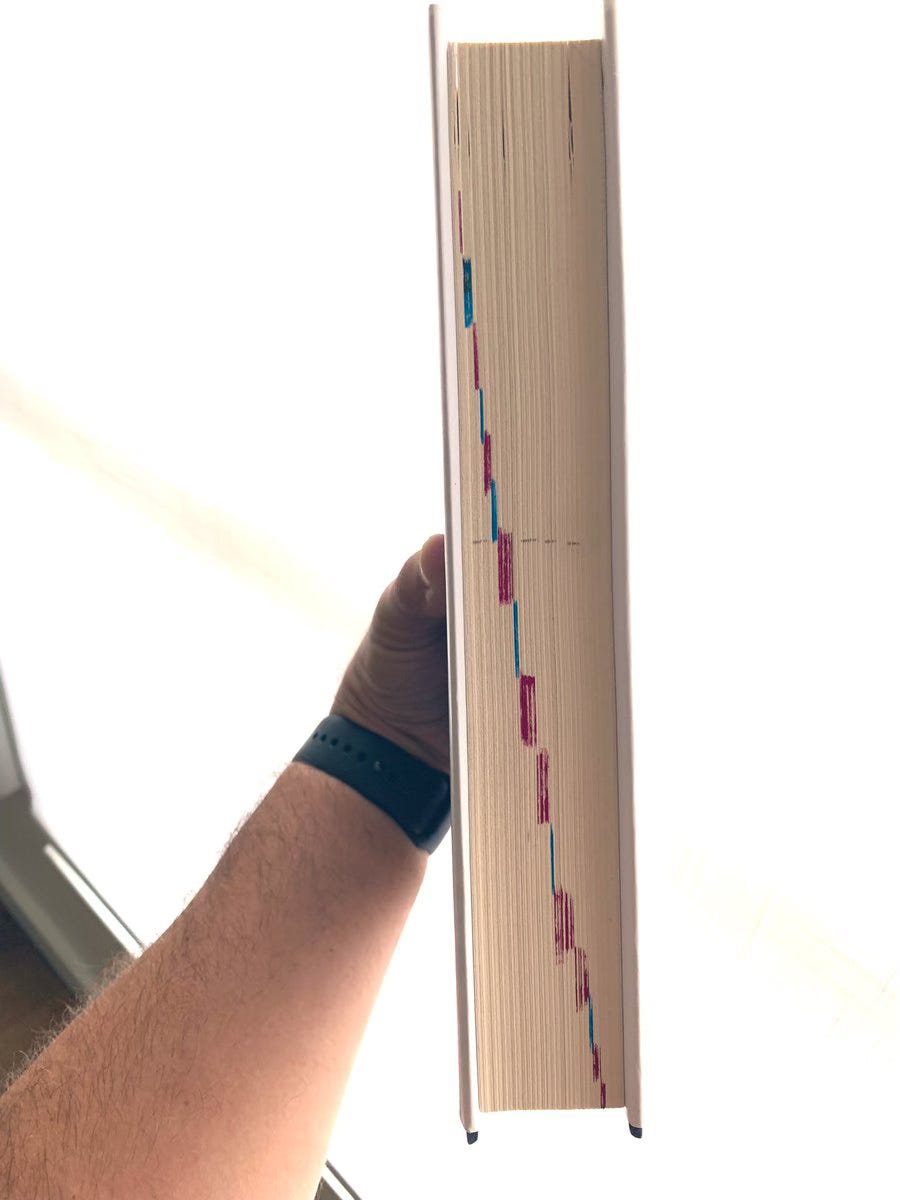The Edge Index
Adventures in making a book your own

Hey y’all,
The outside edge of a book’s pages opposite of the spine is called the “fore-edge.” When I start to tackle a big doorstopper of a book, I like to make what’s called an “edge index” on the fore-edge, usually by rubbing a pencil over the fore-edge. (I’ve learned not to use water-based ink for my summer reading, as my paperbacks tend to get pretty waterlogged.) Pictured above is the edge index I made on my paperback copy of George Eliot’s Middlemarch.
You learn a lot about the structure of a book when you make one of these indexes. Middlemarch, for example, is made up of eight books of roughly the same length. The structure is the way it is because of the way the book was published: When George Eliot was writing the novel, she realized it was going to be really long — “My present fear is that I have too much matter,” she wrote — so she and her companion George Lowes had to come up with an experimental plan for its serialization. They talked Eliot’s publisher, John Blackwood, into publishing the book in eight volumes, issued every two months between December 1871 to February 1873.
Here’s another fore-edge index I made of Dan Charnas’s Dilla Time:
Dilla Time is a wonderful book with a brilliant structure: it alternates chapters of the hip-hop producer and beat-maker J Dilla’s biography with chapters that place him in a larger context of music and musical time. Here’s the clever table of contents, made to look like the grid of a beat sequencer:
Keep reading with a 7-day free trial
Subscribe to Austin Kleon to keep reading this post and get 7 days of free access to the full post archives.




